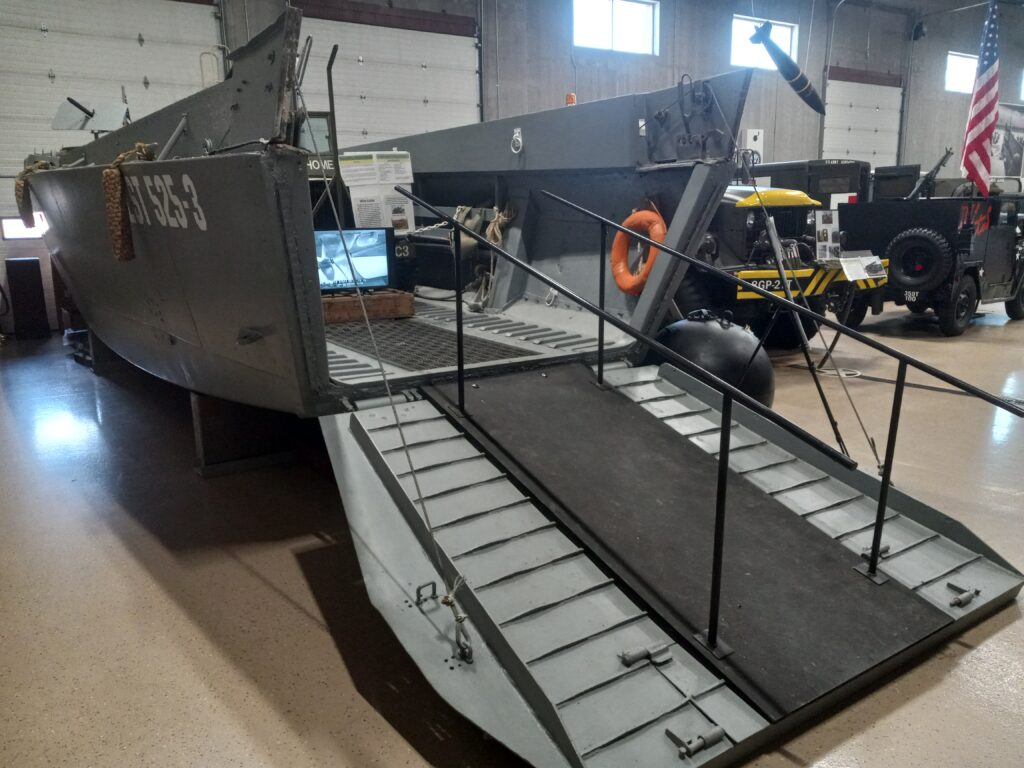LCVP (Higgins Boat)

General:
Manufacture: Higgins Industries and Others
Years produced: 1942-1945 (Wood Hull); 1950-1969 (Fiberglass Hull)
Quantify produced: Wood – 23,000+; Fiberglass – 1,900
Length: 36 ft. 3 in
Width: 10 ft. 10 in.
Draft: 3 ft. aft, 2 ft. 2 in. forward
Displacement: 18,000 lb. light
Capacity: 6,000 lbs. vehicle or 8,100 lbs.
General Cargo: 36 troops
Speed: 12 knots (14mph, 22 kmph)
Crew: 4 (coxswain, engineer, bowman, sternman)
Armament: 2 x .30 cal (7.62MM) Browning machine guns
Engine:
Manufacturer: Gray Marine (Detroit Diesel licensure)
Model: 6-71 (Detroit Diesel Design)
Type: 2-cycle supercharged diesel
Fuel: Diesel
Number of cylinder: 6 (in-line)
Displacement: 426 cu in (6.98L)
Horsepower: 230 hp at 2,100 rpm
The Landing Craft, Vehicle, Personnel (LCVP) boat landing craft was used extensively in amphibious landings in World War II. The craft was designed by Andrew Higginson boats and made for operating in swamps and marshes. Typically constructed from plywood, this shallow-draft, barge-like boat ferry is roughly a platoon-sized complement to shore. Men generally entered the boat by climbing down a cargo net hung from the side of their troop transport; they exited by charging down the boat’s lowered bow.
The LCVP was not a large craft, and it would sway in choppy seas, causing seasickness. Since its sides and rear were made of plywood, (after 1950 the hull was made of fiberglass) it offered limited protection from enemy fire but also reduced cost and saved steel. The boat identification numbers that would be painted on the sides at the bow usually started with the host ship followed by the sequential number of the boat. For example, LCVP number three attached to LST (Landing Ship Tank) 325 would be numbered LST325-3. LCVPs served in the Navy in many capacities through the 1980s.